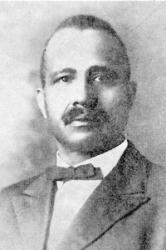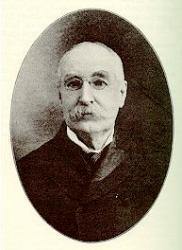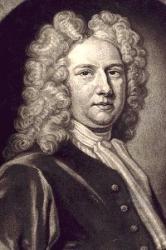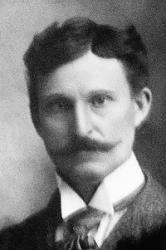Planning worship?
Check out our sister site, ZeteoSearch.org,
for 20+ additional resources related to your search.
- |
User Links
Person Results
Lizzie De Armond

1847 - 1936 Person Name: Lizzie DeArmond Author of "Praising the King" in Songs for Little Singers Lizzie De Armond was a prolific writer of children's hymns, recitations and exercises. When she was twelve years old her first poem was published in the Germantown, Pa. Telegraph, however, it was not until she was a widow with eight children to support that she started writing in earnest. She wrote articles, librettos, nature stories and other works, as well as hymns.
Dianne Shapiro, from "The Singers and Their Songs: sketches of living gospel hymn writers" by Charles Hutchinson Gabriel (Chicago: The Rodeheaver Company, 1916)
Lizzie De Armond
Lida Shivers Leech
1873 - 1962 Person Name: Lida S. Leech Author of "To Learn of Thee" in Songs for Little Singers No. 3 Born: July 12, 1873, Mayville, New Jersey.
Died: March 4, 1962, Long Beach, California.
Leech spent her childhood in Cape May Court House, New Jersey, and attended Columbia University and Temple University. She played the organ at Bethany Methodist Church in Camden, New Jersey, served as accompanist at evangelical services, and wrote some 500 hymn tunes in her lifetime.
Sources--
Emurian, pp. 112-3
Reynolds, p. 336
Lyrics--
God’s Way Is Best
I Have Redeemed Thee
I’ll Go Anywhere
No Fault in Him
Some Day He’ll Make It Plain
Thine for Service
Trust Me, Try Me, Prove Me © 1928
When the Veil is Lifted
--www.hymntime.com/tch
Lida Shivers Leech
John Warrington Hatton
1710 - 1793 Person Name: John Hatton Composer of "DUKE STREET" in Carmina Sanctorum John Warrington Hatton (b. Warrington, England, c. 1710; d, St. Helen's, Lancaster, England, 1793) was christened in Warrington, Lancashire, England. He supposedly lived on Duke Street in Lancashire, from where his famous tune name comes. Very little is known about Hatton, but he was most likely a Presbyterian, and the story goes that he was killed in a stagecoach accident.
Bert Polman
John Warrington Hatton
Charles Price Jones

1865 - 1949 Person Name: Charles P. Jones Author of "Holy Sabbath" in His Fullness Songs Charles Price Jones born December 9, 1865, near Rome, Georgia. He grew up in Kingston, Georgia, and attended the Baptist church. He was converted in 1884 while living in Cat Island, Arkansas. In 1885 he was called to the ministry and began preaching. In 1888 he attended Arkansas Baptist College and taught school in Grant County, Arkansas. He preached and pastored several Baptist churches. After asking God for a deeper experience of grace and fasting and praying for three days, Jones experienced a closeness with God, and in 1895, along with other Baptist holiness adherents, who taught that a second work of grace can cleanse the Christian of original sin. They started a holiness movement in the Baptist church, and he began teaching holiness in his congregation, Mount Helm Baptist Church in Jackson, Mississippi. He faced much opposition from some members of his congregation and other Baptist churches. Eventually the church voted to remove "Baptist" and change it to "Church of Christ." For several years, Jones led a non-denominational holiness movement. In 1899 he began to write songs for his church. Most of his hymns were inspired by a scripture passage. The congregation built the Christ Temple campus which included a 1000 seat sanctuary, a printing press, a school building, and a girl's dormitory. In 1917, Jones organized Christ Temple Church in Los Angeles and moved the printing press there. He died January 19, 1949 in Los Angeles
Dianne Shapiro, from Church of Christ (Holiness) U.S.A. website and "Charles Price Jones (1865-1949) Religious Leader" by David Daniels, Mississippi Encyclopedia website (both accessed 10/9/2020)
Charles Price Jones
Eben E. Rexford

1848 - 1916 Author of "Lord's Day Hymn" in Hallowed Hymns, New and Old Rexford, Eben Eugene.M (Johnsburg, New York, July 16, 1848--October 16, 1916, Shiocton, Wisconsin). Horticulturalist and editor of a Wisconsin farm journal. Many of his verses were used to fill empty corners of the journal. He also wrote many books on gardening. Lawrence University (Appleton, Wisc.), Litt.D. Twenty-five years, organist at First Congregational Church, Shiocton.
See: Smith, Mary L.P. (1930). Eben E. Rexford; a biographical sketch. Menasha, Wis., George Banta Pub. Co.
--Leonard Ellinwood, DNAH Archives and Gabriel, Charles H. (1916). Singers and Their Songs. Chicago: The Rodeheaver Company.
===============
Rexford, Eben Eugene , an American writer, born July 16, 1848, is the author of Nos. 199, 246, 263, 353, in I. D. Sankey's Sacred Songs and Solos), 1878, No. 5, and 456 in the Methodist Sunday School Hymnbook, 1879.
--John Julian, Dictionary of Hymnology, Appendix, Part II (1907)
================
Rexford, E. E. , p. 1587, ii. Additional hymns by this author in common use include:—
1. He saw the wheat fields waiting. Harvest of the World.
2. O where are the reapers. Missions.
3. Rouse up to work that waits for us. Duty.
4. We are sailing o'er an ocean. Life's Vicissitudes.
--John Julian, Dictionary of Hymnology, New Supplement (1907)
================
Eben E. Rexford
David McK. Williams
1887 - 1978 Composer of "[The Sabbath it was by]" in The Hymnal for Boys and Girls David McKinley Williams (Conductor)
Born: February 20, 1887 - Carnarvonshire, Wales, UK
Died: March 13, 1978 - Oakland, California, USA
The Welsh-born American church musician, composer, and teacher, David McKinley Williams, began his career in church music as a chorister in the choir of the Cathedral of St. John, Denver. At the age of 13 he became the organist of St. Peter's Church, Denver.
In 1908 David McKinley Williams went to New York to serve as the organist of Grace Church Chapel. He moved to Paris in 1911 for study with some of the best known French organists of the time. Upon his return, he served as organist of the Church of the Holy Communion in New York. He served in the Royal Canadian Artillery in World War I and returned to his New York position in 1920. After only six months, he was appointed organist and choirmaster of St. Bartholomew's Church, New York. He held this position until his retirement in 1947.
David McKinley Williams developed one of the most outstanding music programs in the USA at St. Bartholomew's. He was head of the organ department of the Juilliard School of Music and a member of the faculty of the School of Sacred Music, Union Theological Seminary. He also served as a member of the Joint Commission on Church Music and the Joint Commission on the Revision of the Hymnal that produced The Hymnal (1940). The Hymnal 1982 uses five of his tunes, including MALABAR used with "Strengthen for Service" (Hymn 312), CANTICUM REFECTIONIS, used with "This is the hour of banquet and of song" (Hymn 316), and GEORGETOWN, used with "They cast their nets in Galilee" (Hymn 661).
Source: The Episcopal Church - Liturgy Music Website
David McK. Williams
Henry Carey

1687 - 1743 Composer of "[O Sabbath, 'tis of thee]" in Hymns and Spiritual Songs Henry Carey, b. 1685 (?); d. London, 1743
Evangelical Lutheran Hymnal, 1908
Henry Carey
Jeremiah Eames Rankin

1828 - 1904 Person Name: J. E. Rankin, D. D. Author of "Sweet Sabbath Day" in United Praise Pseudonym: R. E. Jeremy.
Rankin, Jeremiah Eames, D.D., was born at Thornton, New Haven, Jan. 2, 1828, and educated at Middleburg College, Vermont, and at Andover. For two years he resided at Potsdam, U.S. Subsequently he held pastoral charges as a Congregational Minister at New York, St. Albans, Charlestown, Washington ( District of Columbia), &c. In 1878 he edited the Gospel Temperance Hymnal, and later the Gospel Bells. His hymns appeared in these collections, and in D. E. Jones's Songs of the New Life, 1869. His best known hymn is "Labouring and heavy laden" (Seeking Christ). This was "written [in 1855] for a sister who was an inquirer," was first printed in the Boston Recorder, and then included in Nason's Congregational Hymn Book, 1857. Another of his hymns is "Rest, rest, rest, brother rest." He died in 1904. [Rev. F. M. Bird, M.A.]
--John Julian, Dictionary of Hymnology (1907)
========================
Rankin, J. 33., p. 951, ii. Dr. Rankin, b. in N. H. (not New Haven), and received his D.D. 1869, LL.D. 1889 from his Alma Mater. He was President for several years of Howard University, Washington, D.C. His publications included several volumes of Sermons, German-English Lyrics, Sacred and Secular, 1897; 2nd ed. 1898, &c. In addition to his hymns noted on p. 951, ii., he has written and published mainly in sheet form many others, the most important and best-known being:—
1. God be with you till we meet again. [Benediction.] Dr. Rankin's account of this hymn, supplied to us, in common with Mr. Brownlie, for his Hymns and H. Writers of The Church Hymnary, 1899, is: "It was written as a Christian good-bye, and first sung in the First Congregational Church, of which I was minister for fifteen years. We had Gospel meetings on Sunday nights, and our music was intentionally of the popular kind. I wrote the first stanza, and sent it to two gentlemen for music. The music which seemed to me to best suit the words was written by T. G. Tomer, teacher of public schools in New Jersey, at one time on the staff of General 0. 0. Howard. After receiving the music (which was revised by Dr. J. W. Bischoff, the organist of my church), I wrote the other stanzas." The hymn became at once popular, and has been translated into several languages. In America it is in numerous collections; and in Great Britain, in The Church Hymnary, 1898, Horder's Worship Song, 1905, The Methodist Hymn Book, 1904, and others. It was left undated by Dr. Rankin, but I.D. Sankey gives it as 1882.
2. Beautiful the little hands. [Little ones for Jesus.] Given without date in Gloria Deo, New York, 1900.
Dr. Rankin's translations include versions of German, French, Latin, and Welsh hymns. His contributions to the periodical press have been numerous.
--John Julian, Dictionary of Hymnology, New Supplement (1907)
Jeremiah Eames Rankin
Howard E. Smith

1863 - 1918 Composer of "[Hear the bells, loud and clear]" in Inspiring Songs No. 1
Howard E. Smith
Daniel Read
1757 - 1836 Composer of "LISBON" in African Methodist Episcopal hymn and tune book Daniel Read; b. 1757, Rehoboth, Mass.; d. 1837, New Haven, Conn.An American composer and a primary figure in early American classical music. He was one of the “Yankee Tunesmiths” (1st New England School of Music) when classical music was popular in Europe. Read was a private in Massachusetts militia and later a comb maker and owner of a general store in New Haven, CN. He was only the 3rd composer in the U. S. to put out a collection of his own music. His work, “The American Singing Book” went through 5 editions, making him the most popular composer in the nation. Others often plagarized his tunes in those days. Tunebook sales supplemented his general store income, including “The Columbian Harmonist” (3 volumnes) with 3 revisions, and “The New Haven Collection of Sacred Music” 1818. Read also published “The American Musical magazine” in 12 annual issues in 1786 and 1787. In later years he came to appreciate European music more and imitated that styling in devotional music. Some of Read's music is still being performed, and selections have been published in “The Sacred Harp”, 1991 Edition, and the “Stoughton Music Society” (Centennial Collection 1980).
John Perry
Daniel Read


 My Starred Hymns
My Starred Hymns


